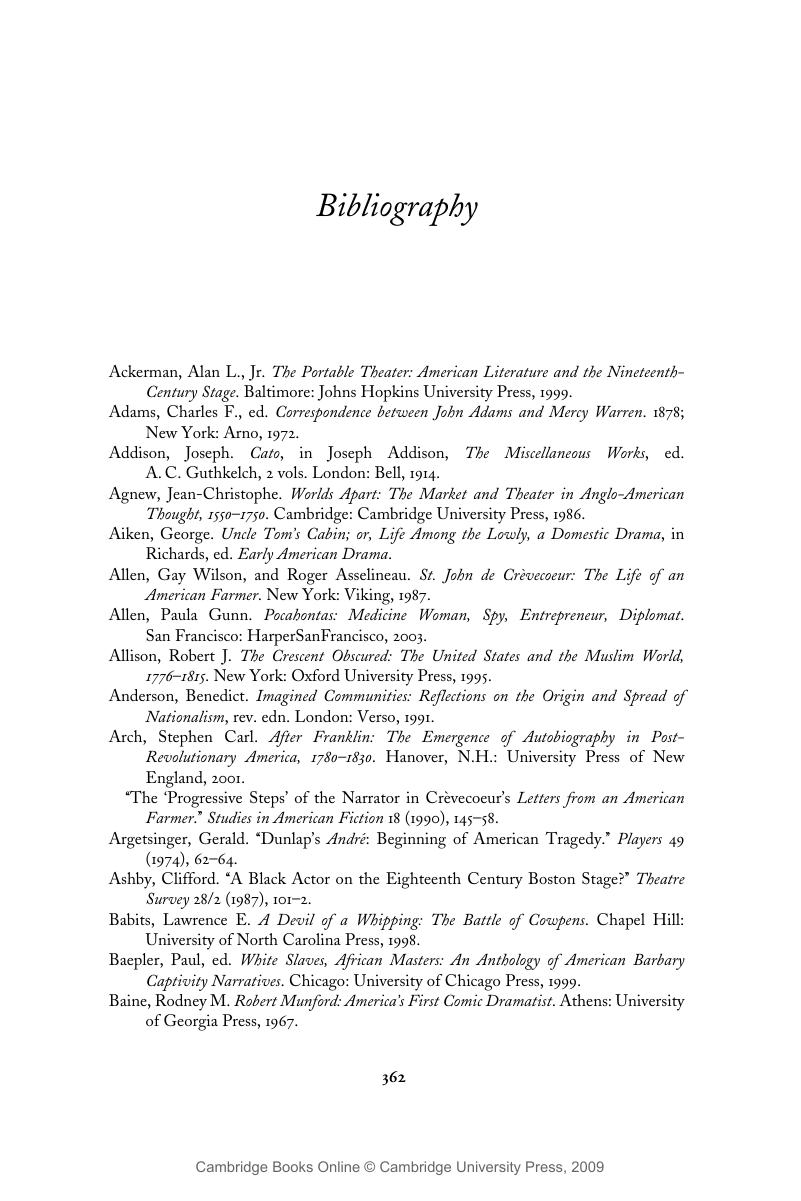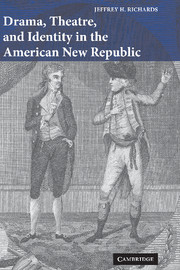Book contents
Bibliography
Published online by Cambridge University Press: 22 September 2009
Summary

- Type
- Chapter
- Information
- Drama, Theatre, and Identity in the American New Republic , pp. 362 - 383Publisher: Cambridge University PressPrint publication year: 2005



